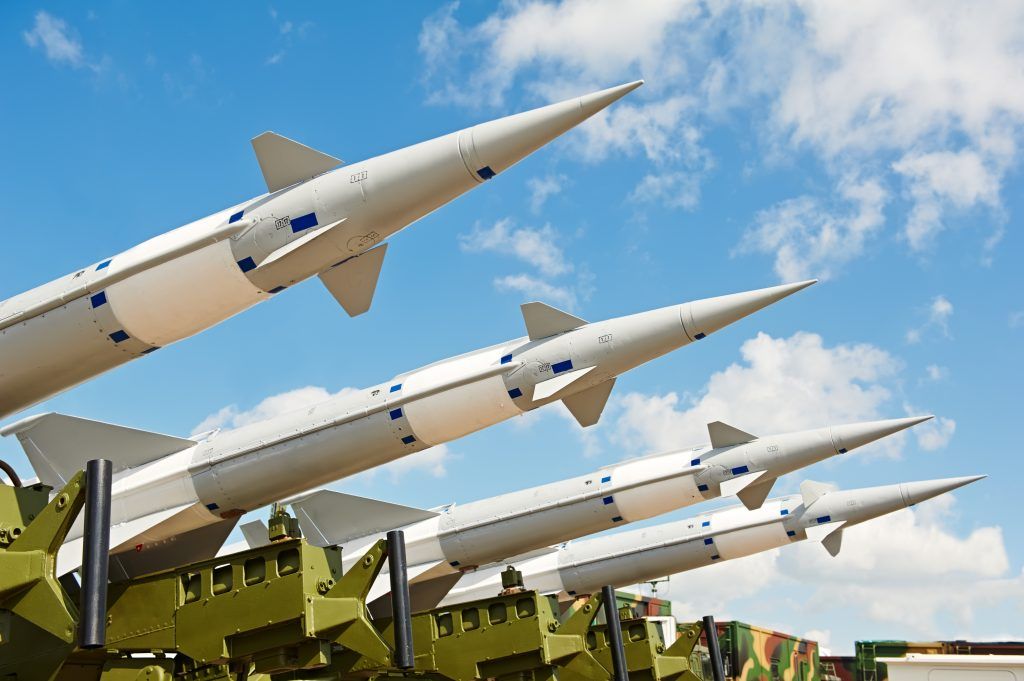The grand picture of verifying nuclear disarmament: What needs to be done?
By Malte Göttsche | February 19, 2018

With today’s nuclear weapon modernization efforts and plans, as well as recent dangerous changes in nuclear policy, in particular the United States’ Nuclear Posture Review, the goal of a world without nuclear weapons—global zero—seems very far away. Given this peculiar situation, however, efforts to prepare for nuclear disarmament must be redoubled. This includes developing new verification approaches for a future in which sanity prevails and the numbers of nuclear weapons in the world are greatly reduced.
In addition to academic research, work conducted by government scientists, and the efforts of the soon-to-be-launched U.N. Group of Governmental Experts (GGE) on disarmament verification, the International Partnership for Nuclear Disarmament Verification (IPNDV) has met for over two years. The latter group includes governmental officials and technical experts from more than 25 countries, and it recently issued a series of reports on how to verify the dismantlement of nuclear warheads, i.e. the verification process surrounding their physical destruction. Verifying nuclear disarmament requires, however, more than verifying warhead dismantlement. Therefore, the IPNDV, the GGE, and the verification research community should develop a set of tools suited to verify irreversible nuclear disarmament comprehensively. This set of tools will need to address both nuclear warheads and fissile materials.
The IPNDV and its achievements so far. The IPNDV started as a United States-led effort. Alongside the United Kingdom, the United States has conducted by far the most research on nuclear disarmament verification. Corresponding research is being conducted, to a much lesser extent, in only a few non-nuclear weapon states, among them Norway, Sweden and Germany. Naturally, one aim of the initiative is to share knowledge and advance national and international thinking about disarmament verification, which are important goals. There is a risk, however, that the views and approaches of those states with more experience in such verification issues are dominating the discussion. The success of a multinational verification initiative depends on how well any state in the partnership is able to bring new or alternative views and concepts into a balanced and open discussion process.
The first phase of the IPNDV was focused on the very center of the dismantlement process, discussing how to verify that a warhead has been physically dismantled—i.e. that the fissile material and the conventional explosive that initiates a nuclear reaction have been separated. The goal is to ensure that actual warheads are being dismantled as declared, and countries are not “dismantling” spoof items, for instance, while the actual warheads are retained in secret. The IPNDV examined verification procedures, starting from the storage of the warhead just before dismantlement until the storage of the separated components.
For the second phase, the partnership plans to broaden its scope by developing a somewhat more comprehensive verification procedure for the entire dismantlement process, which starts at the deployment site of warheads and then includes their transport to the dismantlement site, their actual dismantlement, and the disposition of all warhead components.
Verifying disarmament. Preparing to verify the dismantlement process is indeed of high importance; that preparation will ensure tools are available should they be required as disarmament proceeds. Some promising approaches and technologies are already under development. Going into the future, the verification community should think broadly about verification prerequisites to enable nuclear disarmament as a whole. At the core of disarmament verification lies the question of how to maximize irreversibility and stability during reductions and, eventually, the achievement of global zero. Very large research gaps exist and deserve much more discussion and research.
Verified dismantlement alone does not satisfy irreversibility requirements: Separated fissile material components and explosives could be re-assembled into a warhead in a short time. And even if the fissile materials that resulted from dismantlement were disposed of, what about other stocks of highly enriched uranium and weapons-grade plutonium that have been or will perhaps be produced—and could be used to assemble new warheads in a fairly short amount of time? These stocks are sufficient to create multiples of the numbers of weapons in current nuclear arsenals.
Beyond ensuring that no new weapons and fissile materials are produced, long-term procedures aimed at irreversibility and stability of nuclear disarmament must for instance take account of complete stocks of weapons-usable fissile materials that countries possess. Not knowing the size of these stocks with certainty would likely present a serious obstacle to deep cuts in nuclear weapon arsenals.
A verification process must build, to the extent possible, confidence that no large amounts of weapons-usable materials stocks are deliberately hidden. Gaining that confidence would require establishing the amount of weapons-usable fissile materials that were produced in the past and those that had been disposed of, in order to calculate the difference between the two, which would be the expected stocks today. In South Africa, for example, to create confidence in nuclear disarmament, it was indeed considered essential to reconstruct the fissile material balance to ensure that all of those stocks were under safeguards. There is no compelling reason to believe that this would not be important in the case of other disarming states.
A recommendation for the IPNDV, moving forward. As a matter of fact, it is important to consider fissile materials as an integral part of developing a verification concept for the dismantlement process that IPNDV is working on, because part of the fissile materials disposed of comes from dismantled weapons. After the separation of warhead components, but before their disposition, how can the mass of the fissile materials resulting from dismantled warheads be established, considering that the amount of fissile material contained in individual warheads is usually considered classified?
One option: The material from weapons could be blended with other fissile material stocks, before allowing inspectors to measure the total mass. Another option would be to dispose of the fissile materials from weapons by gradually removing the stocks stored after dismantlement and converting them to items of standard masses before inspectors could measure them. If the amount of fissile materials remaining in the storage area could not be measured by inspectors, the mass per warhead would not be revealed. Average warhead masses could only be deduced once most fissile materials from the storage area have been removed. By then, assuming global zero were at least close, this information might not be considered that sensitive anymore.
The verification of fissile materials is a contentious topic in the Conference on Disarmament in the context of the Fissile Material Cutoff Treaty (FMCT) discussions. It falls directly on a political fault line: To what extent should an FMCT include existing fissile materials, in addition to prohibiting the new production of fissile materials for weapons? Accordingly, technical discussions on such verification approaches are difficult in this politically charged context. The IPNDV, in contrast, is less political in nature: According to its program of work for the second phase, it does not aim to lay the basis for any specific treaty or even preferred arrangements for future disarmament, but instead intends to build “on a sound technical basis, enabling logical and scientific development of verification tools and technologies.” Indeed, the importance of verifying fissile materials at some point along the disarmament process is a purely logical consideration. The IPNDV could therefore be a well-suited forum to hold technical discussions on this topic.
The larger picture of verifying fissile materials. Verifying the amount of fissile material that is disposed of answers only one part of the fissile material inventory issue. How much fissile material has been produced also must be verified. The fissile material production history could be reconstructed using nuclear archaeology, a concept introduced in the early ‘90s.
Records of past fissile material production could be examined and measurements of wastes created as part of production (e.g. from enrichment or reprocessing) could be taken. Measurements in shut-down production facilities (e.g. reactors) could be used to learn about the operation of these facilities and how much material was produced there. The state of research on such assessment is astonishingly low.
While this approach will certainly not be able to account for the fissile material production down to the kilogram, new techniques would perhaps reduce the current uncertainties on fissile material production estimates that the producing states themselves possess. As important as the quantitative assessment is the confidence that an inspecting entity would gain from a process of reconstructing a production history in collaboration with the inspected state.
Interestingly, the overall verification of disarmament could actually center around fissile materials, with less of a focus on warhead dismantlement. For instance, the United Nations Institute for Disarmament Research has recently developed a plausible concept that does not at all rely on verifying the dismantlement of warheads, but on reductions of fissile material inventories.
In conclusion, developing the toolbox to verify nuclear disarmament needs creativity and vision. A broad research approach should be taken. Perhaps, even the assumption that verifying the dismantlement of warheads will necessarily lie at the heart of verifying nuclear disarmament may not be as clear as some may think. Therefore, the verification community, including the IPNDV and the GGE, should in particular also explore the role of verifying fissile materials as part of nuclear disarmament, in order not to lose sight of the grand picture.
Together, we make the world safer.
The Bulletin elevates expert voices above the noise. But as an independent nonprofit organization, our operations depend on the support of readers like you. Help us continue to deliver quality journalism that holds leaders accountable. Your support of our work at any level is important. In return, we promise our coverage will be understandable, influential, vigilant, solution-oriented, and fair-minded. Together we can make a difference.
Topics: Analysis, Nuclear Weapons, Technology and Security















